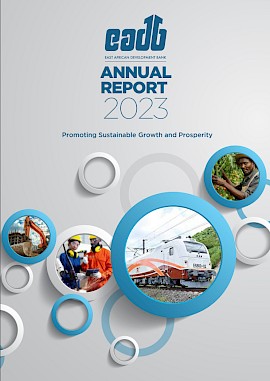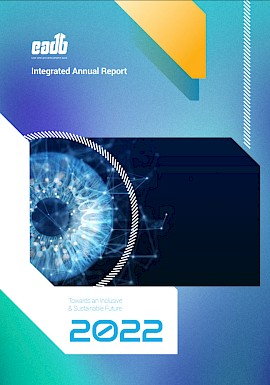Capital Markets Development
EADB recognizes the importance of having vibrant and diversified regional capital markets as a critical force for regional integration. Towards this end, EADB has championed the strengthening and deepening of the region's capital markets through its local currency resource mobilization programs (issuance of bonds). The Bank pioneered the issuance of corporate bonds in East Africa and continues to raise local currency resources by issuing bonds in the region's capital markets. Since its first issue of 1996 on the Nairobi Stock Exchange, the EADB has had a successful bond issuing and servicing experience in the sub-region, mobilizing about USD 90 million from 6 issues, with the proceeds being invested in the productive sectors of the East Member States.
As the only regional DFI for East Africa, EADB has played a leading role in strengthening financial institutions in EAC with a view to promoting financial inclusion. This has been done through funding of micro finance institutions and strengthening the capital base of institutions that serve SMEs through direct equity participation.
EADB's Role In Regional Integration
EADB has been at the forefront of regional development initiatives over the last four decades. While progress has been made, with increasing macroeconomic and government stability, a favourable business environment and strong institutions within the region, important bottlenecks remain. For instance the EAC member states are noted to have a low exports, lower degree of financial deepening, lower levels of domestic savings, higher reliance on donor aid, limited physical infrastructure and human capital.
Member states of the EAC have rightly prioritised infrastructure development in order to help spur regional trade and integration. EADB has for long been involved in resource mobilisation initiatives which have helped finance key infrastructure projects within the region. Owing to the massive resources required, individual countries may lack the scale or expertise required to mobilise sufficient resources for infrastructure initiatives such as trade corridors, transport networks, water resources management as well as development of massive energy projects and telecommunications connectivity. EADB works with development partners to help initiate, structure and support these initiatives.
The scaled up regional integration efforts that started off with the signing of the EAC treaty in 1999, followed by the East African Customs Union Protocol, the common market protocol and the current efforts to create a monetary union have helped facilitate EADB's work enabling it to invest in viable regional enterprises that promote sustainable development. With EADB support, many enterprises have been enabled to scale up their operations and are today multinationals or even transnationals operating in the entire East African region and beyond.
New loans approved by the Bank over the last 10 years, mostly to SMEs, have helped spur the region's development and supported thousands of jobs while ensuring improved household level incomes for thousands of families.
Partnership For Clean Development
Climate change remains one of the biggest obstacles to the attainment of sustainable socio-economic development. East African countries are particularly vulnerable due to their weak economies and heavy reliance on agriculture, which is less resilient to negative impacts of climate change.
EADB has scaled up its environment and social management systems to ensure full integration of environmental and social considerations into its operations and the operations of entities it supports through its lending and investment activities. This is designed to ensure adherence to international best practice in environmental and social risk management and ultimately sustainable development of member states.
To consolidate its environmental initiatives across the region, the Bank entered into an important partnership with the United Nations Framework Convention on Climate Change (UNFCCC) for the establishment of a Regional Collaboration Centre at the Bank's headquarters in Kampala, Uganda.
The centre, which covers 23 countries mainly in Anglophone Africa, will help address historical lack of equity in regional distribution of Clean Development Mechanism (CDM) projects and could help the region increase its attractiveness and potential for CDM.
"The partnership with UNFCCC fits quite well into our most important mandate of facilitating sustainable development through long term financing and technical support", said EADB Director General, Ms. Vivienne Yeda.





